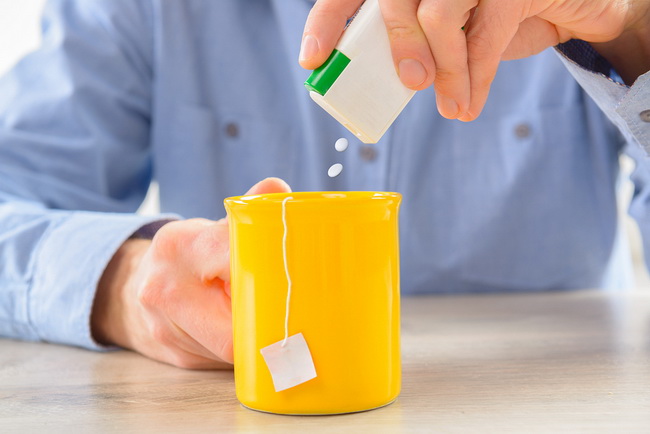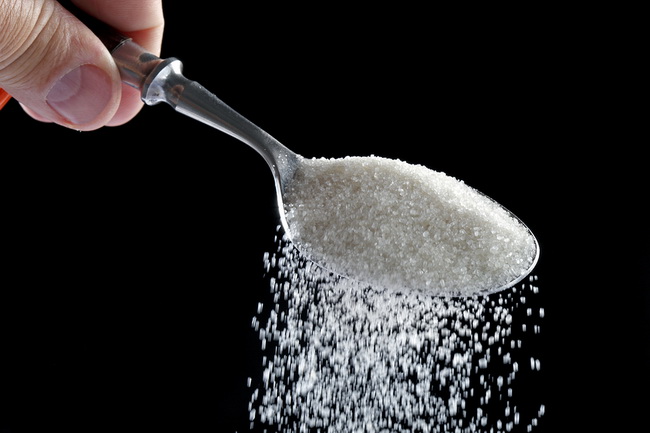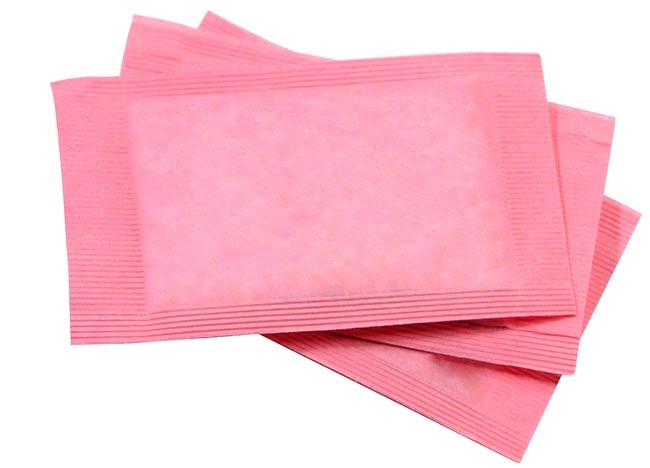- Make It Yourself Lavender Heart-Shaped Bath Bombs!
- 20 Things You Never Knew About “Down There”
- 12 Best Foods For Those Suffering From Arthritis Pain
- 12 Personal Hygiene Mistakes Almost Everyone Makes (Mom Never Told You About #4!)
- 15 Medicinal Plants And Herbs From The Cherokee People
- 12 Mind-Blowing Benefits Of Drinking Coconut Water During Pregnancy
- 12 Outstanding Winter Foods That Won’t Fatten You Up Like A Christmas Turkey
The Little Yellow Packet of Death

Photo credit: bigstock
Splenda has gone from a “safe” status to a “caution” status officially. Not from the FDA, however, but from the Center for Science in the Public Interest (CSPI). The FDA approved sucralose (Splenda) back in 1998. It’s undergone a lot of scrutiny since then and the findings have not been pretty.
Sucralose was actually discovered when researchers were creating a new type of insecticide. It’s true. Why did they introduce sucralose to a market that already had numerous artificial sweeteners? Because the public was becoming aware that these other chemical sweeteners were dangerous. By the way, don’t confuse sucralose with your ordinary table sugar, sucrose.
An in-depth scientific review of sucralose showed that it has a long list of health concerns including DNA damage, a greater cancer risk when used in cooking, and toxicity. This study was published in the Journal of Toxicology and Environmental Health. Like aspartame, the side effects most reported from consumers include:
- Seizures
- Migraines
- Dizziness
- Gastrointestinal issues
- Blurry vision
- Increases in blood sugar levels
- Weight gain
- Allergic reactions
When heated, sucralose releases a toxin called chloropropanols, which is in a class of dangerous chemicals called dioxins. The makers of Splenda insist that it is stable when used for cooking, but the findings of this study disprove their claims. Many artificial sweeteners break down when exposed to higher temperatures, such as aspartame, and cannot be used for baking. Apparently the same is true of sucralose, except that the manufacturers won’t take responsibility for that claim.
Continue to Page 2

Photo credit: bigstock
Dioxin is actually a waste product that comes from smelting, chlorine bleaching, and pesticide manufacturing. Dioxins are a well known carcinogen and were one of the main components in Agent Orange, used to defoliate the jungles of Vietnam during the war. It’s easily one of the most dangerous chemicals known to man and yet, the American public is being told it is safe.
Recent research involving animals suggests that there is a connection between the consumption of sucralose and an increased risk of leukemia. This piece of research alone should cause the FDA to reconsider the status of this chemical sweetener.
Another study in 2008 that involved animals showed that this dangerous artificial sweetener could kill as much as 50 percent of your gut bacteria. The bacteria that live in your digestive system are extremely important to your overall health. If you don’t have a balanced level of bacteria, you leave yourself open to unhealthy, dangerous micro-organisms that can cause you severe health problems. As if this isn’t bad enough, sucralose seems to kill off more of the “good” bacteria in your gut. In fact, one study showed that, even after a three month hiatus of sucralose, the overall numbers of gut bacteria remained compromised.
The FDA’s approval of this product was due to an early study which stated that sucralose would simply pass through the body. However, more recent studies show that it is metabolized in your digestive system. Therefore, the overall safety profile of this product is now unknown.
Unfortunately, many diabetics use this artificial sweetener in an attempt to control their blood sugar levels. Someone should tell them that, in both human and animal studies, sucralose affects the glycemic and insulin responses. In a nutshell, this means that using sucralose won’t help your blood sugar levels as you would imagine it would.
Sucralose was listed as safe by the FDA based on 110 animal and human studies. Sounds like a lot, correct? A closer look reveals that only 2 of those 110 studies were done on humans and one of them was only 4 days in length. 4 days! If you are a long term consumer of Splenda, then you are now the test subject of what happens when humans consume this product for long periods of time.
If you browse through the research it quickly becomes obvious that only about 10 percent of all studies done involve the safety of sucralose. Currently, there are only about 15 studies involving the safety of Splenda, and 13 of those were funded by the very company that produces Splenda. Does that sound like a conflict of interest to you?
You can’t trust a company to test its own products. Aspartame is a perfect example. 100 percent of manufacturer funded studies showed aspartame is completely safe. Independent studies showed that 92 percent of them had at least one health concern.
Continue to Page 3

Photo credit: bigstock
When people have an adverse reaction to sucralose it often goes unreported because it mimics other ailments or problems. Eating a muffin made with sucralose, for example, might give you a terrible headache but you could attribute this to a gluten intolerance, or any number of allergic reactions. One of the best ways to determine what the source of your sensitivity is is to do an elimination program. For example, stop eating everything that contains sucralose for 14 days and see if your symptoms improve. You could then start eating sucralose again and if the problem returns fairly quickly, you will have your answer.
If you have been using sucralose for an extended period of time, it might take your body three months or more to return to normal. Eating some fermented foods and taking probiotics can help return your digestive system to normal much more quickly.
SEE ALSO: Why You Should Never Ever Eat Store Bought Bread
Although the makers of Splenda will proudly say it’s made from sugar, but the truth of the matter is, chemically, it’s much more like DDT. There are many reasons the US outlawed DDT back in the early 1970’s, it’s a deadly toxin!
If you remember, Splenda came out in 2000, proudly stating it was made from sugar so you could expect it to taste just like sugar, with no ugly aftertaste. They were promptly sued by the makers of Equal who said that they were intentionally confusing consumers into thinking that their product was natural and health. The makers of Splenda settled out of court in 2007. They probably knew they would lose if they did go to court because sucralose is definitely not natural.
It’s best to avoid all artificial sweeteners, whether it is sucralose, aspartame, saccharin, neotame, or whatever is coming next down the pipeline. Although the actual mechanisms of harm may be slightly different from one to the other, every single one of these chemical sweeteners cause harm to your health, from one degree or another.
You don’t need these chemical products anyway, not when there are so many natural alternatives. Try raw honey, real maple syrup (not pancake syrup), date sugar, and coconut sugar.
Sources:
Institutefornaturalhealing.com
(By the way, if you’re enjoying this article, you may want to subscribe to the Naturalon’s free newsletter; get breaking news alerts on GMO’s, fluoride, superfoods, natural cures and more… You privacy is protected. Unsubscribe at any time.)

































J J
Dec 10, 2014 at 5:07 pm
When I took my son to the orthodontist recently, his dentist was concerned about the affect that sugar may be having on his teeth, which are hard to clean because of the braces. I told him that I had concerns about artificial sweeteners, but he told me that the choice that we should make involved no sugar for the sake of my son’s teeth. My son doesn’t drink many beverages that have sugar or artificial sweeteners, but it appears that he should have none. It appears that there is no panacea, in spite of what the manufacturers say. I appreciate having this information.